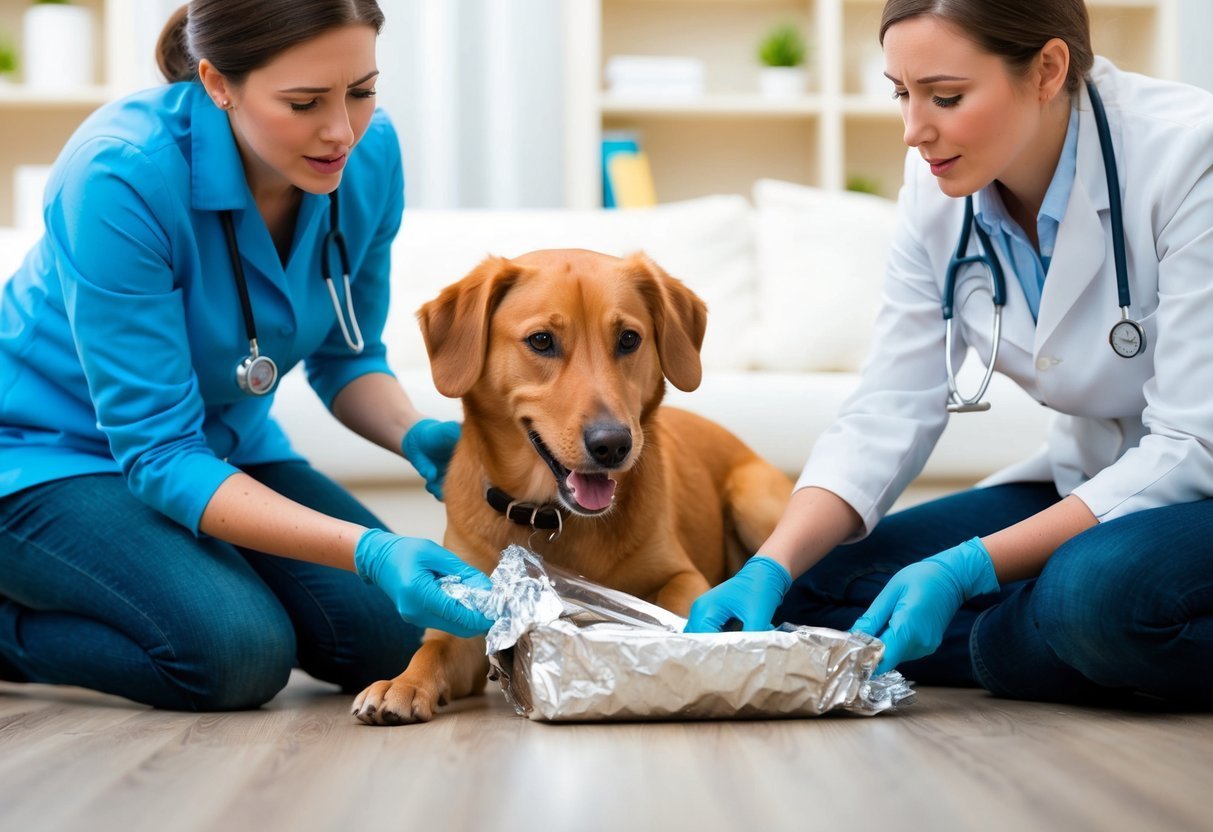Dogs are curious creatures, and sometimes that curiosity can lead them to munch on things they shouldn’t, like aluminum foil.
If you’ve ever found your furry friend nibbling on this shiny material, you might wonder what to do next. It’s important to know the emergency steps to take if your dog eats aluminum foil to ensure their safety and well-being.
Aluminum foil can pose risks depending on how much your dog has consumed and their overall health.
Acting quickly can make a significant difference in preventing potential problems.
In this article, you’ll learn essential steps to take if your dog ingests aluminum foil, ensuring you’re prepared for any situation.
1) Check your dog’s mouth for leftover foil
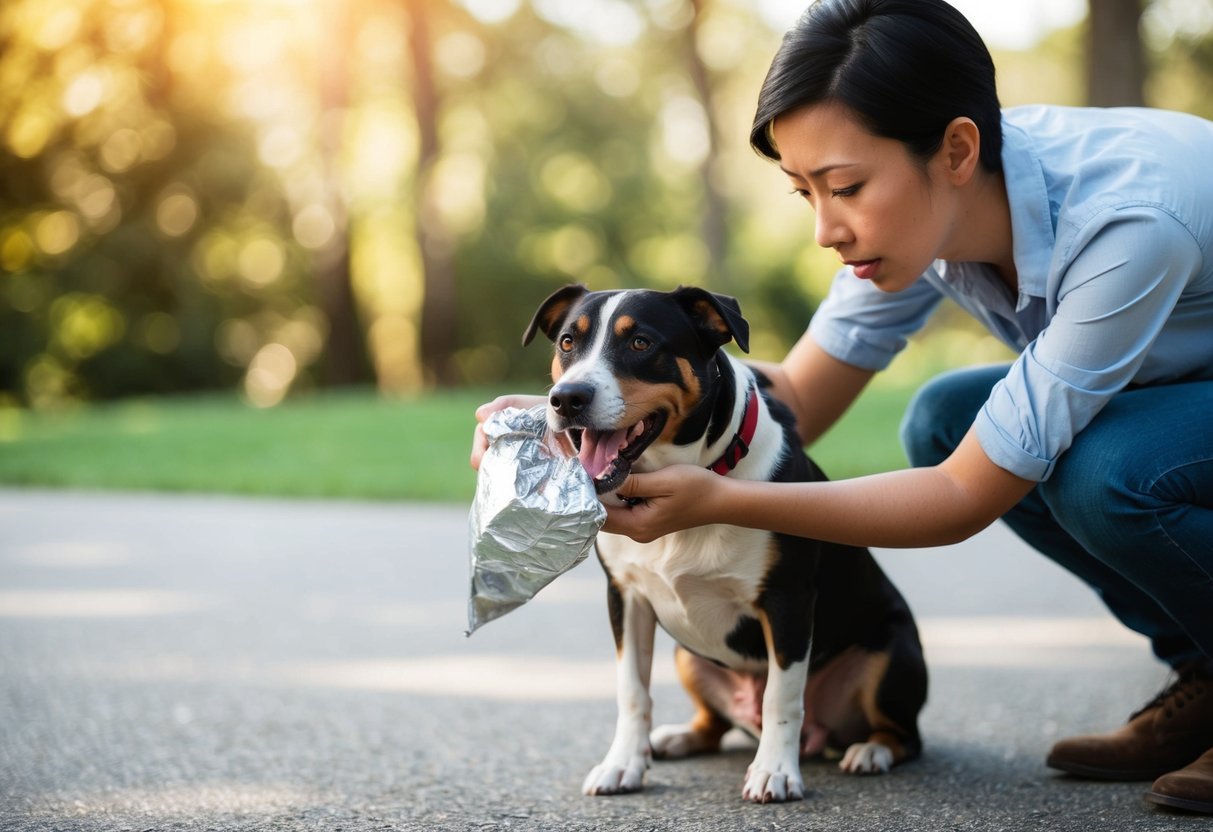
First, get close to your dog and gently open their mouth.
Look for any pieces of aluminum foil that might be stuck between their teeth.
If you see some small bits, try to remove them carefully.
Use your fingers or a cloth, but be cautious.
You don’t want to hurt your dog.
Pay attention to your dog’s reactions.
If they seem anxious or try to pull away, give them some space.
It can be a bit tricky, so be calm and gentle.
After checking, keep an eye on your pup for any signs of distress.
If you find a lot of foil or worry about damage, contact your vet for advice.
They can help you decide what to do next.
Checking your dog’s mouth is a good first step.
It helps ensure their safety before taking further action.
Monitor your dog’s behavior for signs of distress
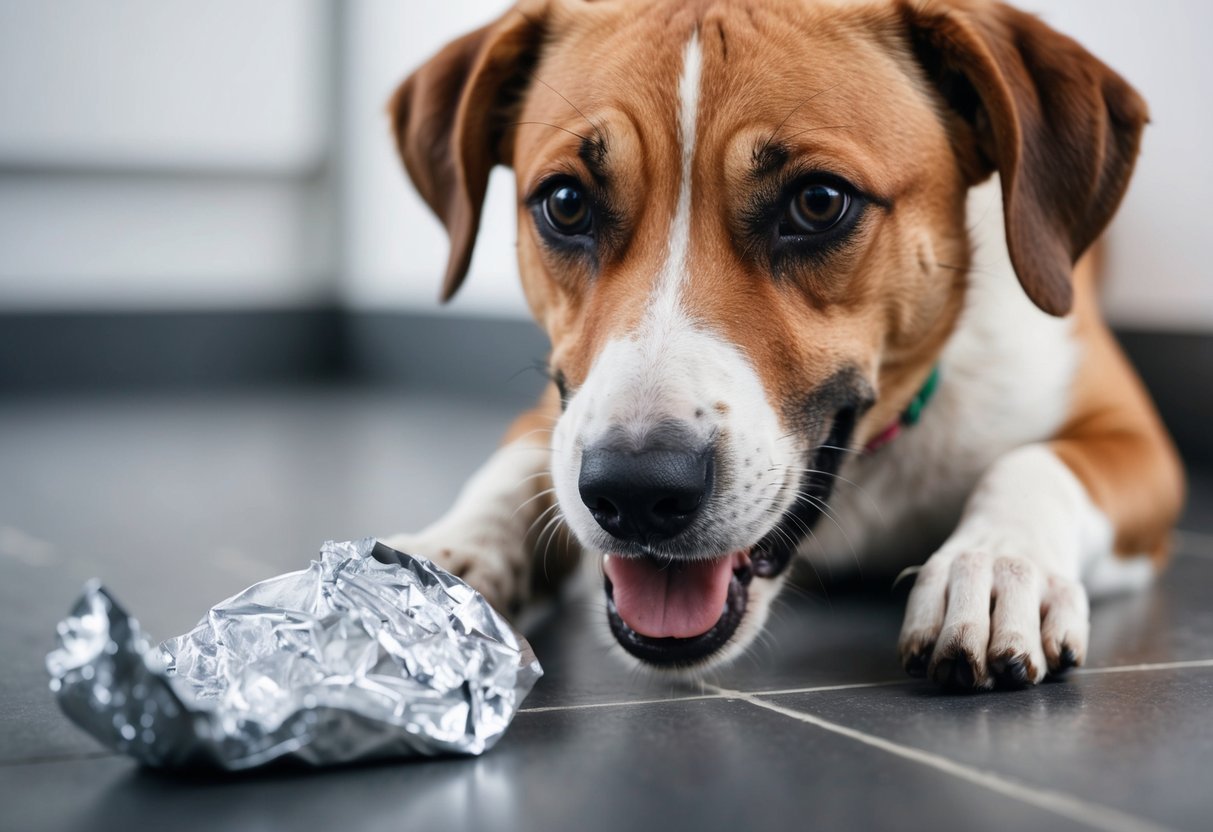
After your dog eats aluminum foil, it’s important to keep a close eye on their behavior.
Look for any sudden changes that may indicate they’ve had a bad reaction.
Watch for signs like vomiting, diarrhea, or lethargy.
These can be signs that your dog is feeling unwell.
If your pup seems overly restless or anxious, this could also be a red flag.
Pay attention to their eating and drinking habits.
If your dog refuses food or water, it may be time to call the vet.
Changes in appetite can signal discomfort or other problems.
Check for any unusual noises, like excessive whining or barking.
If your dog is panting a lot more than usual, it might be a sign of distress.
Don’t forget to observe their physical behavior.
Keeping track of any visible injuries or signs of pain can help you know if they need immediate care.
Call your veterinarian for professional advice
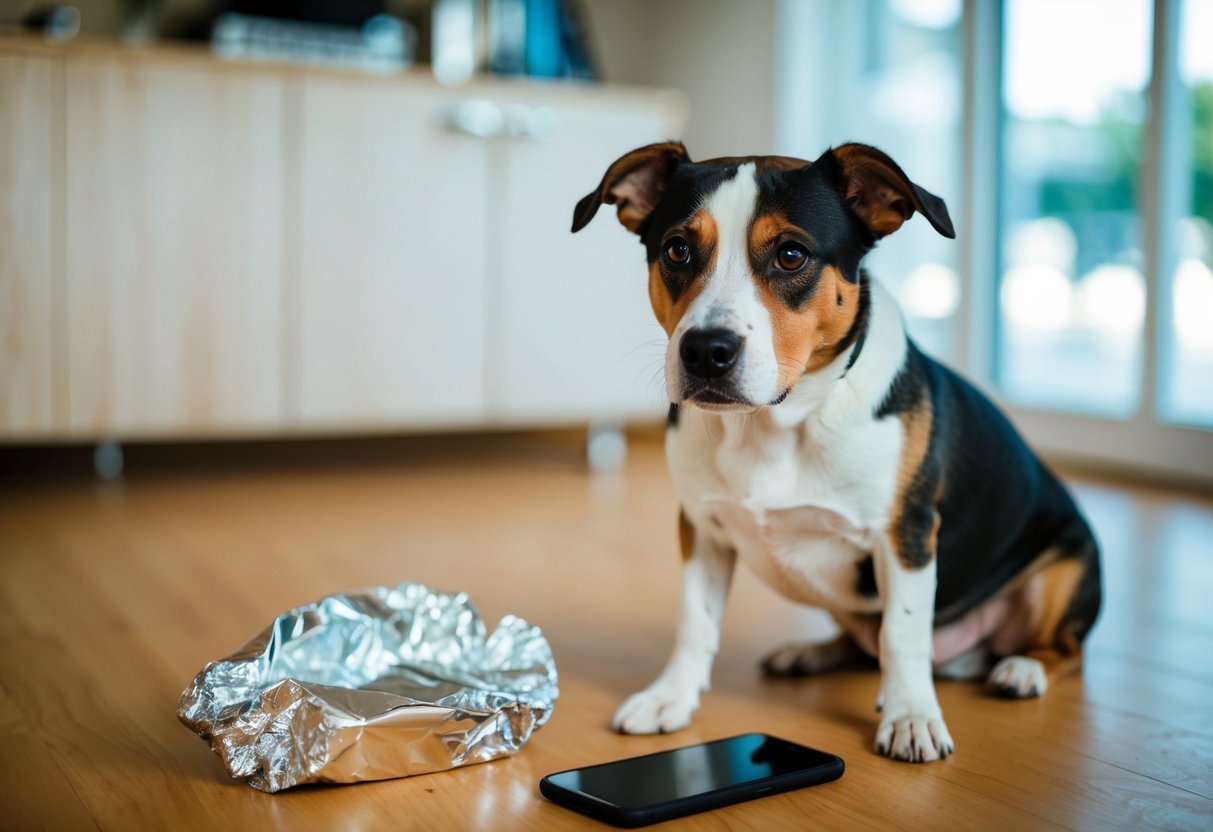
If your dog has eaten aluminum foil, the first thing you should do is call your veterinarian.
Even small amounts can be risky, so it’s always better to be safe.
Let your vet know how much foil your dog consumed.
Share any other food items your pet may have eaten along with the foil.
This information can help your vet provide the best advice for your situation.
Your vet may ask about your dog’s size, breed, and health history.
This information helps them assess the risks involved.
Depending on the situation, they might suggest monitoring your dog at home or bringing them in for an evaluation.
If your dog shows any signs of distress, don’t wait.
Contact your vet immediately.
Signs like vomiting, trouble breathing, or not eating can indicate a serious problem.
Getting professional advice is crucial.
It gives you peace of mind and helps ensure your dog’s safety.
Don’t hesitate to reach out; your vet is there to help you and your furry friend.
Avoid inducing vomiting unless instructed by a vet
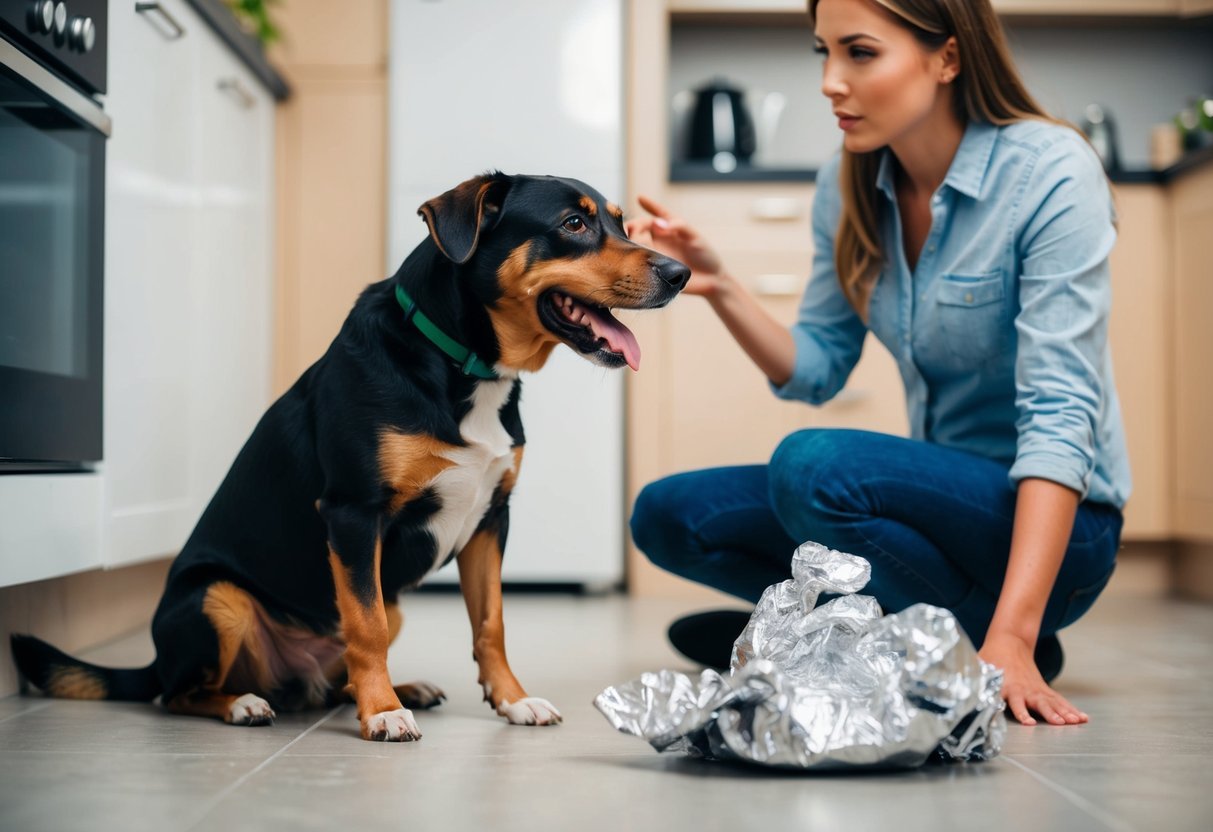
If your dog has eaten aluminum foil, you might think that making them vomit is a good idea.
However, this can be risky.
You should never induce vomiting without first talking to your veterinarian.
Some items can cause more harm if they come back up.
This includes sharp objects, which can hurt your dog’s throat or stomach.
Your vet can guide you on the best steps to take based on what your dog has eaten.
If your dog seems fine but you’re still worried, call your vet.
They will ask questions about your dog’s size, what they ate, and when it happened.
This information can help them give you the best advice.
Remember, your vet knows your dog’s health history and what’s best for them.
Taking their advice is crucial to keep your dog safe and healthy.
5) Assess for symptoms like vomiting or lethargy
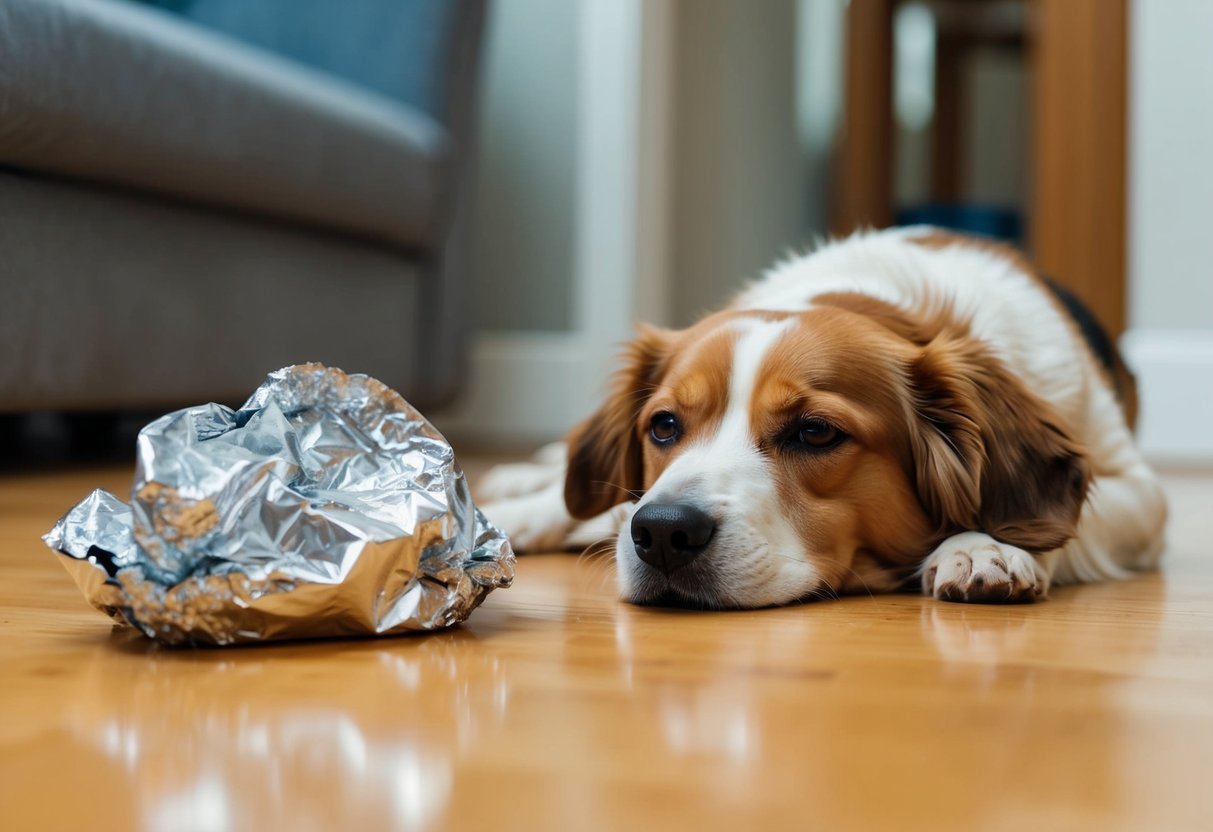
After your dog eats aluminum foil, keep a close eye on them.
Look for signs of distress.
Common symptoms include vomiting, diarrhea, and lethargy.
If your dog is acting sleepy or unwilling to play, it could be a sign they’re not feeling well.
Vomiting can mean their stomach is upset.
If your dog shows any of these signs, it’s time to act quickly.
Also, check for loss of appetite.
If your pet refuses to eat their favorite treats, it might indicate discomfort or pain.
Don’t ignore these symptoms.
They could lead to serious health problems if not addressed promptly.
If you notice any of these issues, contact your vet as soon as possible.
They will help you determine the right steps to take next.
6) Offer your dog water to help with digestion
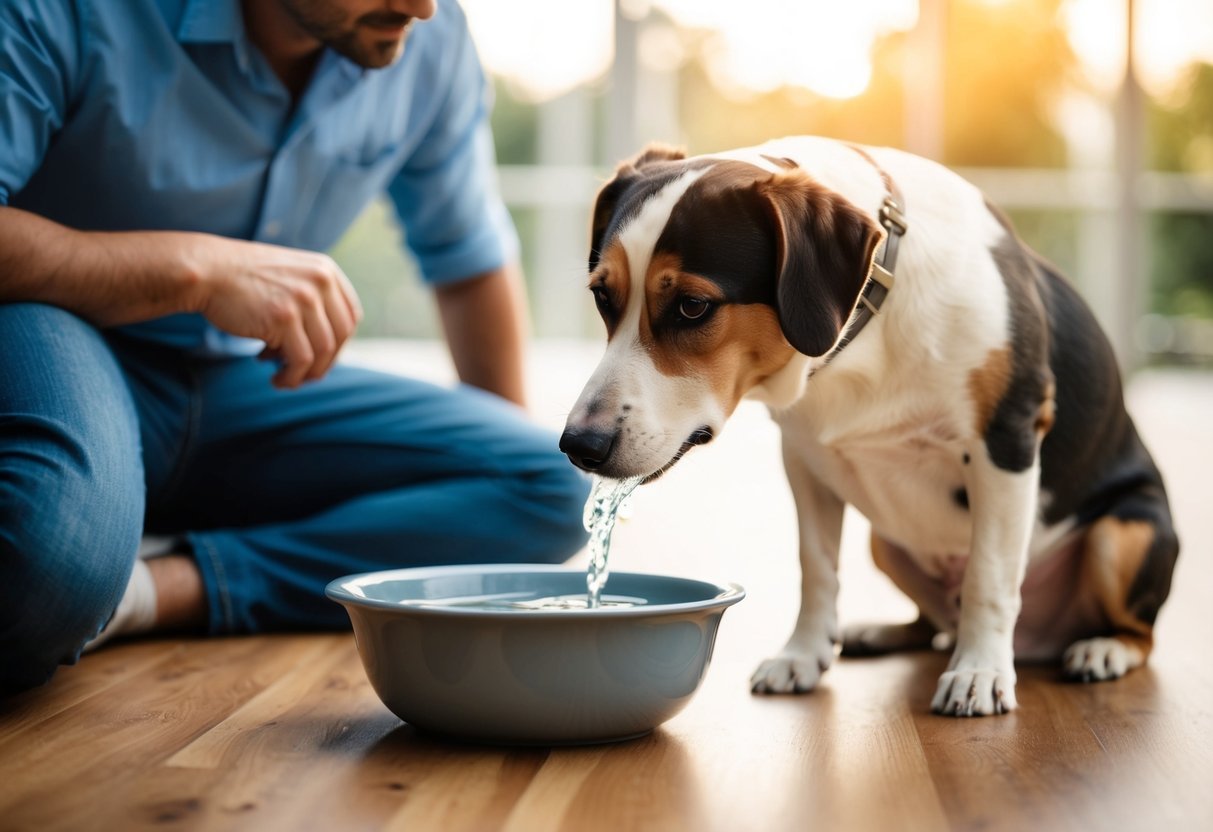
If your dog has eaten aluminum foil, giving them plenty of water is important.
Hydration can help their digestive system work better.
Water helps move things through the digestive tract.
This can be especially useful if the foil is causing any blockages.
Make sure your dog has access to fresh water.
Encourage them to drink by offering a bowl or filling a water bottle.
Watching your dog drink can give you peace of mind.
It shows that they are staying hydrated during this time.
If your dog isn’t drinking on their own, try adding a little low-sodium broth to the water.
This can make it more appealing.
Be alert for any signs of distress in your dog.
If they seem uncomfortable or refuse to drink, contact your veterinarian.
They’ll provide the best guidance on what to do next.
7) Remove any remaining foil within reach
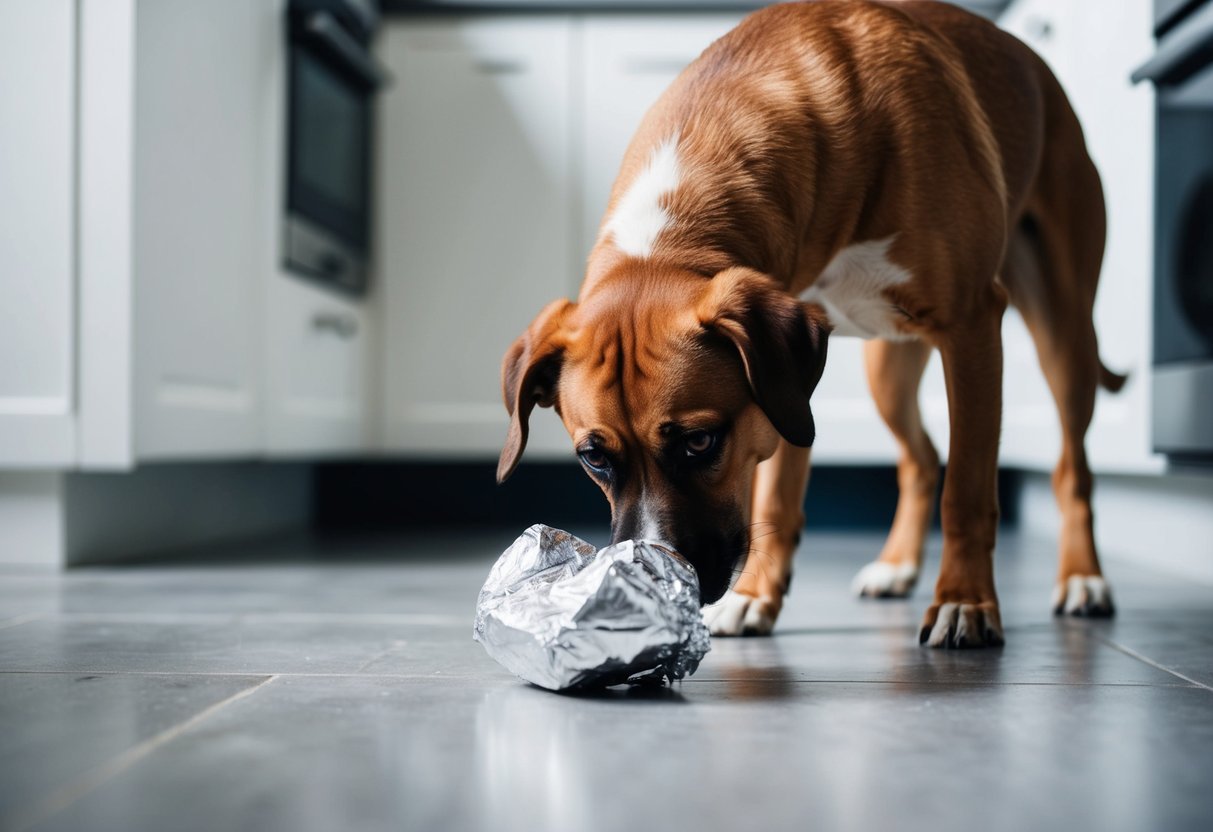
Once you realize your dog has eaten aluminum foil, check the area for any leftover pieces.
Dogs can be curious and may consume more if they find it.
Make sure to clean up any food scraps that might be hiding the foil.
They can attract your dog and encourage further nibbling.
Look through garbage cans and any other spots where foil might be lying around.
If your dog raided the bin, ensure it’s completely empty or securely closed.
Keeping your home free of potential hazards is important.
This simple step can help prevent accidents and keep your furry friend safe in the future.
Always stay alert for signs that your dog may try to get into places where foil is present.
Being proactive will help you protect your pup from dangers at home.
8) Prepare to visit the vet if symptoms worsen
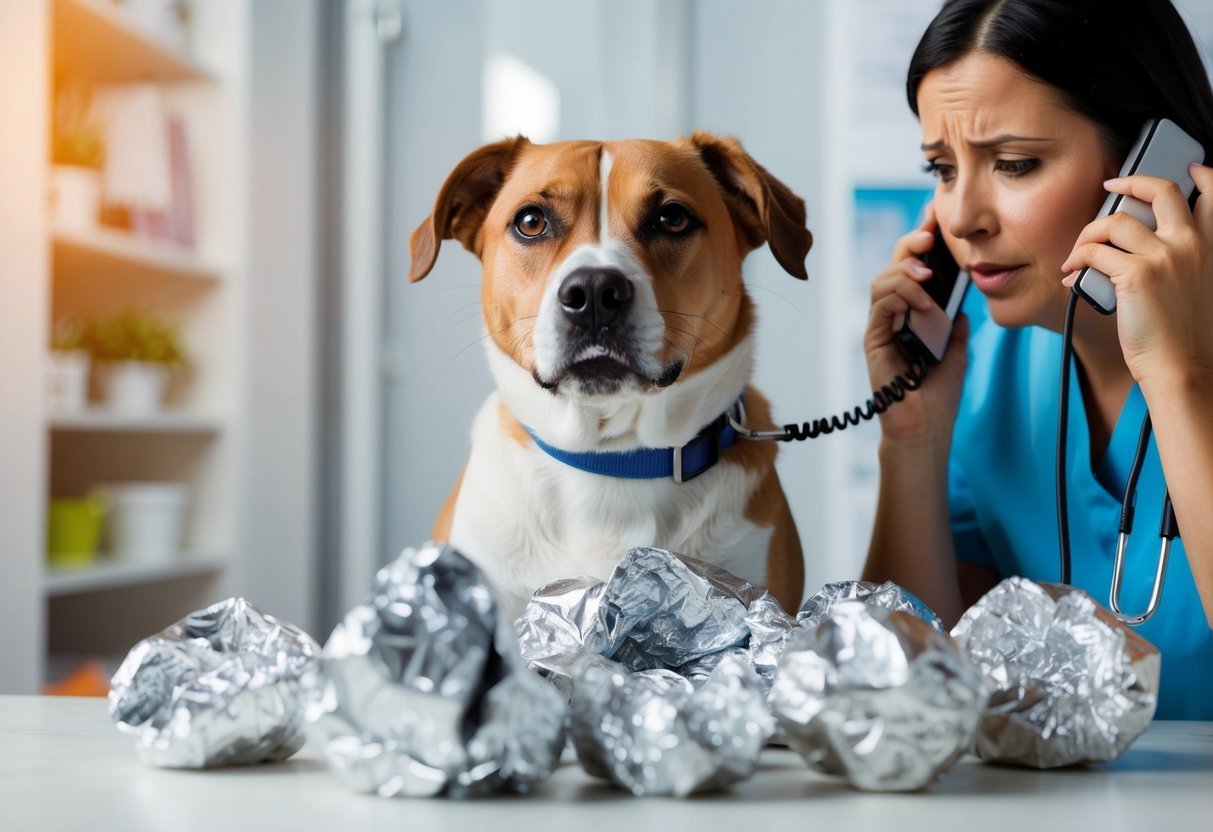
If your dog ate aluminum foil, keep a close eye on them.
Watch for any signs that their condition is getting worse.
Symptoms like vomiting, difficulty breathing, or lethargy could mean a serious issue.
If your dog starts vomiting or shows signs of distress, it’s time to act.
Contact your vet right away to discuss the situation.
They might want to see your dog or give advice on what to do next.
Be ready to provide details about when your dog ate the foil and any symptoms you’ve noticed.
This information can help the vet determine the best course of action.
If your dog’s stomach is swollen or they seem to be in pain, seek immediate help.
Bloating can be dangerous, and your dog may need urgent care.
Keep your calm and act quickly.
It’s always better to be safe and get professional help when it comes to your furry friend’s health.
Understanding the Hazards of Aluminum Foil
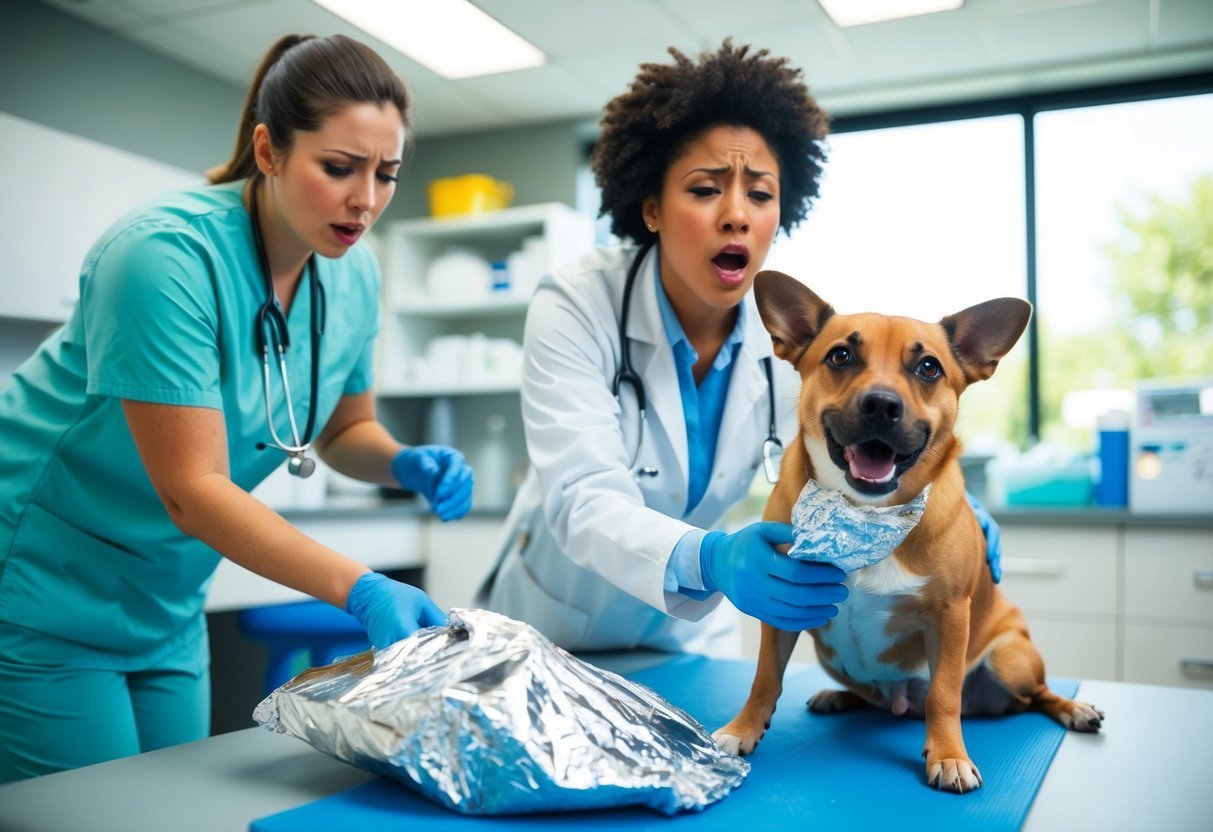
Aluminum foil might seem harmless, but it can pose serious risks to your dog’s health.
Knowing why it’s dangerous and the potential health hazards involved can help you take action if your furry friend ingests it.
Why Aluminum Foil Is Dangerous for Dogs
Aluminum foil is thin and flexible, which makes it easy for dogs to accidentally swallow.
Its shiny surface can attract your dog’s attention, much like a toy.
However, that shiny appeal can lead to trouble.
Dogs often chew and swallow items without fully realizing the consequences.
If they ingest aluminum foil, it can cause blockages in their digestive system.
These blockages may lead to serious pain and health issues.
Always be sure to keep aluminum foil, along with other potential hazards, out of your pet’s reach.
Potential Health Risks Involved
If your dog eats aluminum foil, there are several health risks to consider.
First, it can cause choking.
If a piece gets lodged in your dog’s throat, it can obstruct their airway, leading to severe distress.
Secondly, if it passes into the stomach or intestines, it can cause a blockage.
Symptoms of blockage may include vomiting, lethargy, and abdominal pain.
If you notice these signs, it’s important to seek veterinary help right away.
Moreover, ingested foil can potentially tear the digestive tract, leading to internal bleeding.
This is a serious condition that requires emergency care.
Always monitor your dog closely after any accidental ingestion of aluminum foil.
When to Call the Vet
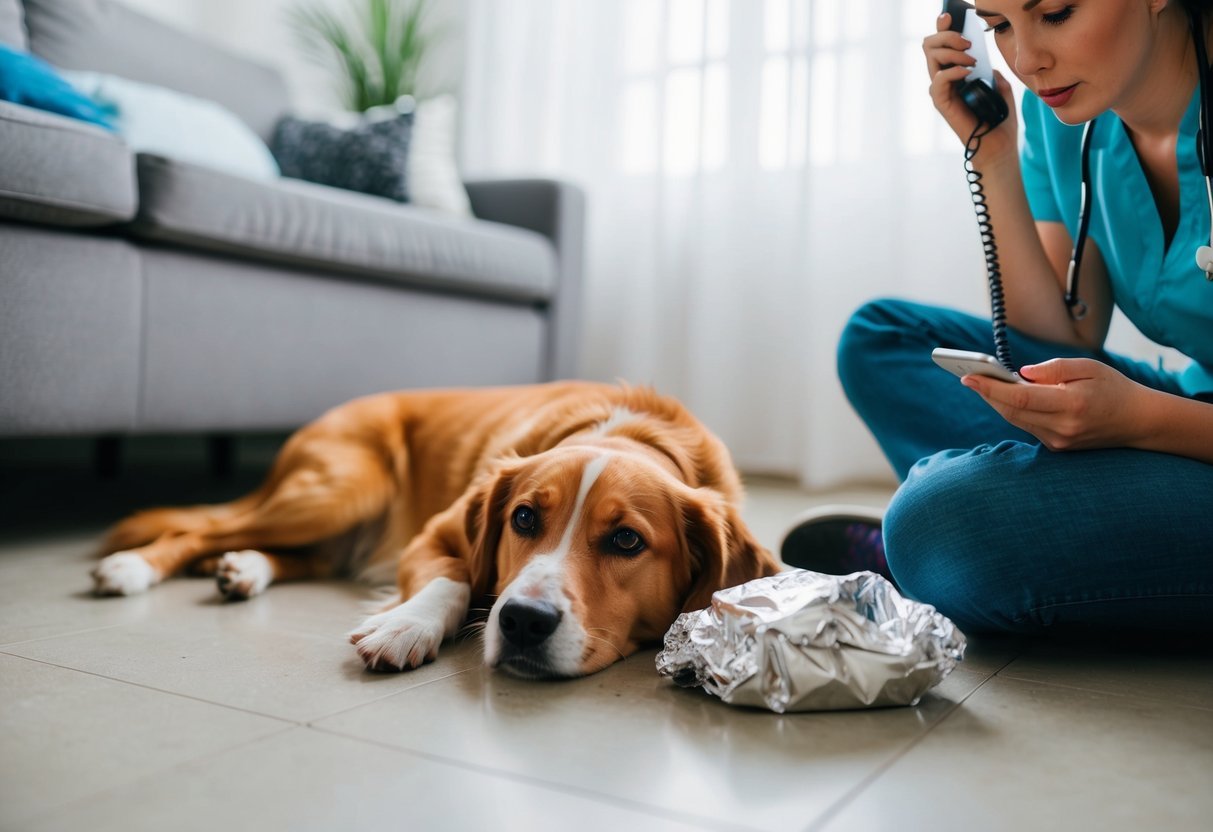
Knowing when to call your veterinarian can make a big difference if your dog eats aluminum foil.
Some situations require immediate attention, while others might be more manageable.
Here’s what you should look for.
Identifying Serious Symptoms
Keep an eye out for any signs that your dog may be in trouble.
Symptoms to watch for include:
- Vomiting: If your dog is vomiting repeatedly, it could mean the foil is causing distress.
- Lethargy: Excessive tiredness or lack of energy may signal an underlying issue.
- Loss of Appetite: If your dog refuses food for more than a few hours, take it seriously.
- Abdominal Pain: If your dog appears uncomfortable or is whining when you touch its belly, this is a red flag.
If you notice any of these symptoms, it’s time to get in touch with your vet.
They can provide guidance on what steps to take next.
How a Veterinarian Can Help
When you call your vet, make sure to share several things to assist them properly.
Be ready to share:
- Amount of Foil: Tell them how much aluminum foil your dog ate.
- Weight and Breed: This helps your vet understand what might be normal for your dog.
- Other Symptoms: Mention any signs you’ve noticed, like nausea or pain.
Your vet may suggest inducing vomiting if it’s been within a couple of hours since ingestion.
If they feel it’s necessary, they might ask you to bring your dog in for more tests.
Quick action is important in these cases, so don’t hesitate if you have concerns.
Frequently Asked Questions
When your dog eats aluminum foil, it can be concerning.
Many pet owners have similar worries about safety and health risks.
Here are some common questions and clear answers to help guide you.
Can munching on aluminum foil be dangerous for my pooch?
Yes, aluminum foil can be dangerous for dogs.
If swallowed, it may cause choking or get stuck in their digestive system.
It can lead to more serious issues like blockages, which require immediate veterinary attention.
What should I do if my dog just wolfed down some aluminum foil?
First, check your dog’s mouth for any leftover foil.
If you find pieces, remove them gently.
Next, watch your dog closely for any unusual behavior and call your veterinarian for advice.
They might suggest watching your dog or bringing them in for further evaluation.
How do I know if I should worry about my dog eating aluminum foil?
Worry if your dog shows signs of distress, like vomiting or loss of appetite.
Take note if they appear lethargic or seem to have a painful abdomen.
If you notice these symptoms, it’s best to contact your vet.
What are the signs my dog is not feeling well after eating tin foil?
Watch for symptoms such as vomiting, diarrhea, or excessive drooling.
Your dog might also show signs of pain or discomfort, like whining or not wanting to move.
If you see any of these signs, it’s important to call your veterinarian.
How can I help my dog if it ate aluminum foil and is now throwing up?
If your dog is throwing up after eating foil, keep them calm and ensure they have access to water.
Don’t give them food until you’ve consulted your vet.
They can advise you whether to monitor your dog at home or seek immediate care.
Is there a safe amount of aluminum foil that dogs can ingest, or is even a little bit harmful?
There isn’t a safe amount of aluminum foil for dogs.
Even a small piece can cause problems, such as choking or digestive issues.
It’s best to keep foil out of reach and contact your vet if ingestion occurs.

